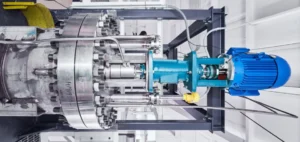The Zaporizhia nuclear complex in Ukraine reduced the scope of maintenance performed on all its units in 2022, due to a lack of maintenance personnel, the absence of external contractors who perform a significant portion of the work, as well as the lack of spare parts needed for maintenance, including critical components.
According to the International Atomic Energy Agency (IAEA), the plant currently has only about a quarter of its regular maintenance staff. Although new employees are being hired, it will take time to train them.
Rostaom’s role in the safety of the Zaporizhia power plant
The complex has submitted a large list of required spare parts to the Russian state nuclear company Rosatom. However, due to the significant reduction in staff, the complex does not currently have a systematic in-service maintenance and inspection schedule, the IAEA added.
Before restarting any of the reactor units, the IAEA said the site was considering obtaining advice from an engineering organization within Rosatom. The purpose is to assess the condition of the plant and provide recommendations for all safety critical structures, systems and components for maintenance or replacement prior to operation.
IAEA Director General Rafael Mariano Grossi said that this situation has a negative impact on the seven pillars essential to ensure nuclear safety and security, especially pillars two and five concerning safety and security systems and equipment and logistics security.
Fighting still prevents the plant from operating properly
The Zaporizhia complex still relies on the only operating 750 kV power line for the external electricity it needs for reactor cooling and other essential nuclear safety and security functions. Meanwhile, a 330 kV backup line that was damaged on March 1 across the Dnipro River from the Russian-controlled complex remains beyond repair. Ukraine said that military actions are preventing its experts from safely accessing the site to repair the line. Russia reported last month that Rosatom was working to remove damaged equipment from the open switchyard, with the aim of restoring three 330 kV lines in the grid system located in Russian-controlled territory. The IAEA team will access the site to assess the situation.
Currently, four of the six reactors are in cold shutdown, while two (units 5 and 6) are in hot shutdown, which allows them to provide heat to the plant and the nearby town of Energodar where many workers live. However, the IAEA said that as the weather warmed up, Unit 6 was taken out of service cold.






















